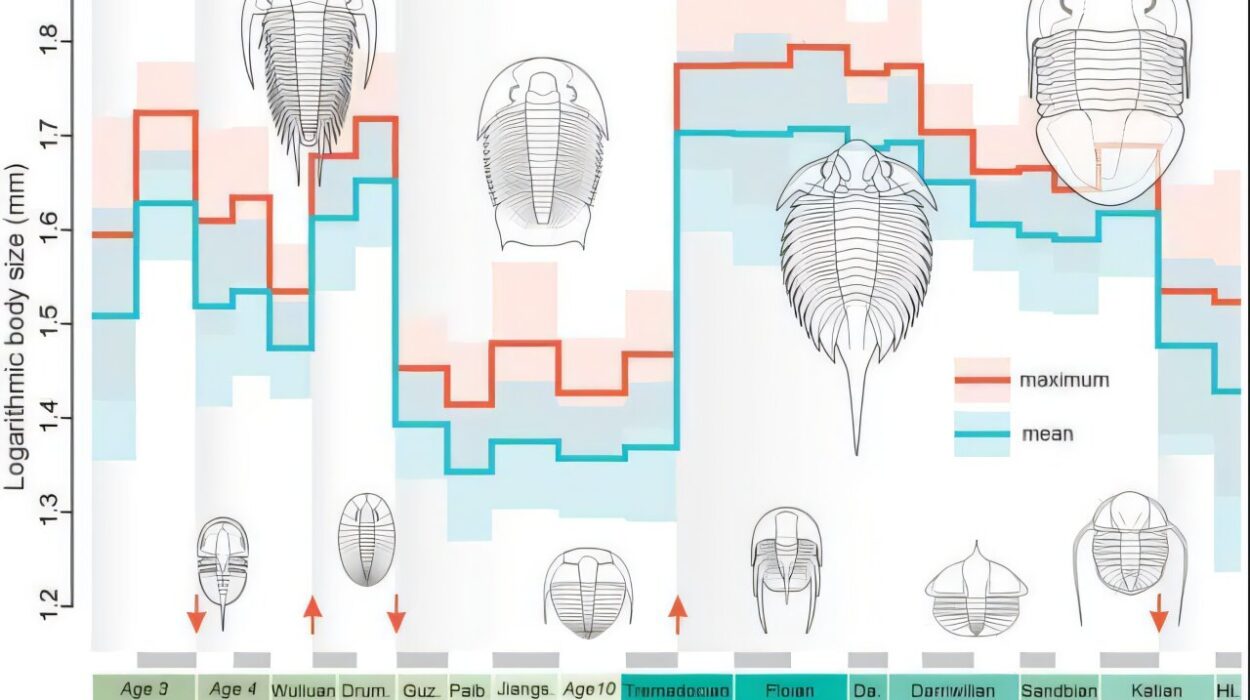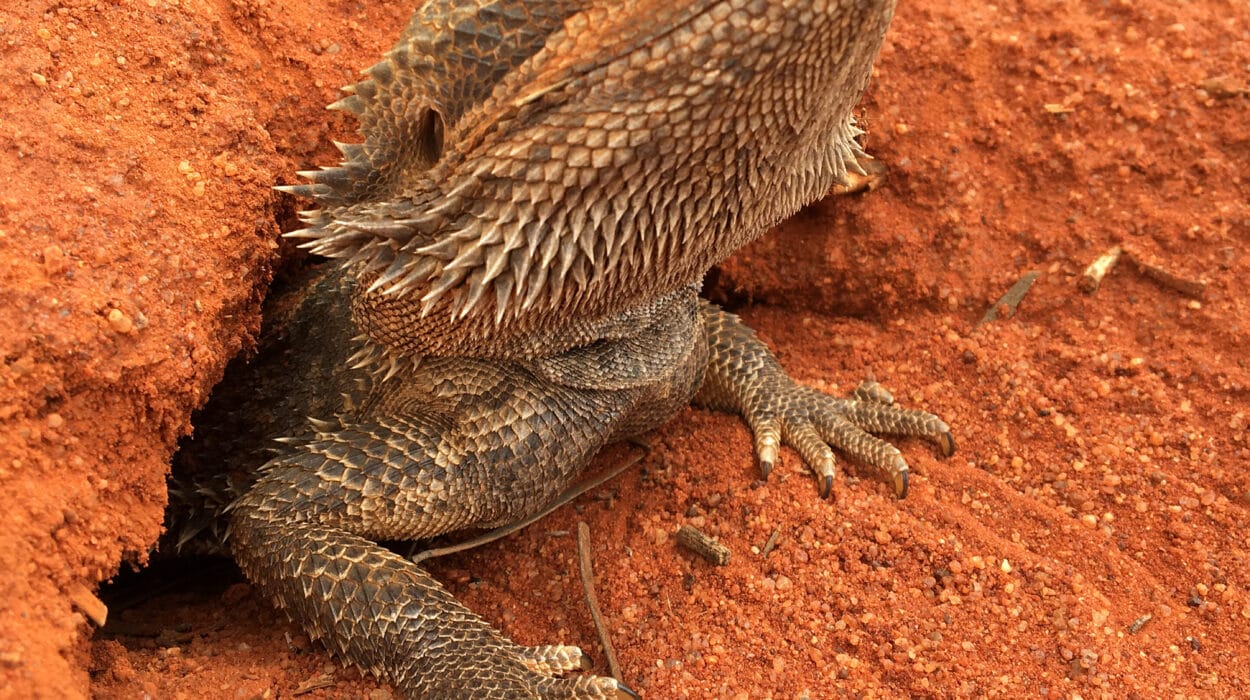A recent study has uncovered intriguing findings about how one of the hottest periods in Earth’s history may have driven a split in the evolutionary path of lampreys, separating Northern and Southern Hemisphere species. These findings provide valuable insights not only into the ancient history of these enigmatic creatures but also suggest how modern aquatic species might respond to the warming climate we are currently experiencing. The study, published in Proceedings of the Royal Society B: Biological Sciences, investigates the genetic divergence of lampreys through both fossil records and modern genomic analysis, offering new hypotheses for their distribution today.
Lampreys, often regarded as “creepy” or “primitive” by many due to their eel-like appearance and tooth-filled, sucker-like mouths, are in fact an ancient lineage of jawless fish. Despite their rather unsettling appearance, they play an important ecological role, particularly in their larval form. Lamprey larvae serve as crucial filters in stream beds, helping to maintain water quality by feeding on organic particles. Despite their significance, very little is known about the evolutionary history of lampreys, including their genetic relationships and distribution over millions of years.
Lily Hughes, the study’s corresponding author and a research assistant professor at North Carolina State University, is especially passionate about lampreys due to their evolutionary uniqueness. “Lampreys are simultaneously creepy and special—even though people tend to think of them as just tubes with a freaky circle of teeth,” she says, emphasizing how much remains unexplored about their evolutionary past. Hughes, also the curator of ichthyology at the North Carolina Museum of Natural Sciences, along with co-author Devin Bloom, set out to investigate lampreys’ ancient history in an effort to piece together their evolution and discover when the distinct separation between the Northern and Southern Hemisphere species occurred.
The study team employed a multifaceted approach that combined DNA analysis of contemporary lampreys with fossil records to develop “phylogenomic trees”—a representation of evolutionary relationships. The results pointed to a major divergence event around 93 million years ago during the Cretaceous period, long before the breakup of the ancient supercontinent Pangea. This significant divergence predates the widely accepted explanation for lamprey distribution that attributes physical separation due to tectonic movements during the Pangea breakup. Instead, the researchers suggest that environmental conditions related to the climate changes during the Cretaceous played a key role in the distribution of lamprey populations.
At the time of the divergence, the Earth’s climate was notably warmer than it is today, with global average temperatures reaching around 82°F (28.1°C). Tropical temperatures soared to around 93.5°F (34.2°C). Lamprey larvae are known to be temperature-sensitive, preferring cooler conditions in the fresh waters of streams and rivers where they burrow to survive. Hughes explains, “Lamprey larvae like to be cooler, which is why they burrow into stream beds. The tropical temperatures at this point were much hotter than larval lampreys can survive.”
It is this combination of heat and habitat that the researchers propose may have caused the split between the Northern and Southern Hemisphere lamprey species. According to their hypothesis, one possible explanation is that the lamprey species residing near the equator, in the tropics, may have gone extinct due to the harsh tropical heat. The surviving populations might have been pushed to more temperate climates, where the larvae could survive. “A couple of things could have happened as a result of these temperatures to explain the split: maybe tropical lampreys went extinct and the groups lost a common genetic link that way, or maybe the lampreys just moved away from the equator to more temperate climes,” Hughes explains.
The researchers further discuss how the breakup of Pangea, a supercontinent that once encompassed nearly all of Earth’s landmasses, might have previously been viewed as a likely cause for the distribution pattern we see in lampreys today. Traditionally, scientists posited that the physical separation of lampreys occurred after the split of Pangea. However, the new evidence based on genomic and fossil data suggests that the Northern and Southern Hemisphere lampreys split long after the continental landmasses began drifting apart, leading researchers to reconsider the timing and mechanisms that gave rise to today’s populations.
These findings open up new possibilities for understanding the history of lamprey evolution, offering a fresh perspective on the factors that drove their current geographical distribution. The results could also have important implications for how we understand the responses of other aquatic species to global climate change. While lampreys may have been able to adapt to dramatic climate fluctuations millions of years ago, current trends of rapid warming could be putting similar stress on modern aquatic populations.
“It’s important for us to understand how past climate events shaped the biodiversity of the present,” says Bloom, an associate professor at Western Michigan University and co-first author of the study. “By studying events like the Cretaceous warming, we might gain insights into the vulnerabilities that species face today as we enter a new period of global warming.”
The study also provides a fascinating look at the broader potential of using both molecular biology and paleontology in understanding evolutionary processes. Lampreys, as relatively primitive creatures that have remained largely unchanged for hundreds of millions of years, offer an ideal window into deep evolutionary history. Their genetic data, in combination with fossil evidence, can reveal much about past environments and how ancient organisms coped with environmental stressors.
“The unique genetic divergence we observed suggests that ecological factors, such as temperature and available habitat, play an important role in shaping species diversity,” notes Hughes. “As we continue to explore lamprey evolution, we may uncover more about how species react to environmental pressures that could have direct implications for understanding modern biodiversity and the challenges facing species in a rapidly changing climate.”
The research team involved in this study also included experts such as Kyle Piller from Southeastern Louisiana University, Nicholas Lang from Lane Tech College Prep High School, and Richard Mayden of St. Louis University, all of whom contributed invaluable expertise in molecular biology, evolutionary genetics, and conservation biology.
Ultimately, this study challenges long-held assumptions about the origins and distributions of lampreys and suggests that climatic factors played a pivotal role in their divergence. The research provides a new hypothesis that, in conjunction with ongoing studies, may help scientists better understand how other species—both ancient and modern—might be impacted by our planet’s ever-changing climate. As our world continues to experience rising temperatures and shifting ecosystems, insights like these will be crucial for addressing environmental challenges and guiding conservation efforts to protect the planet’s biodiversity.
Reference: Lily C. Hughes et al, Phylogenomic resolution of lampreys reveals the recent evolution of an ancient vertebrate lineage, Proceedings of the Royal Society B: Biological Sciences (2025). DOI: 10.1098/rspb.2024.2101






